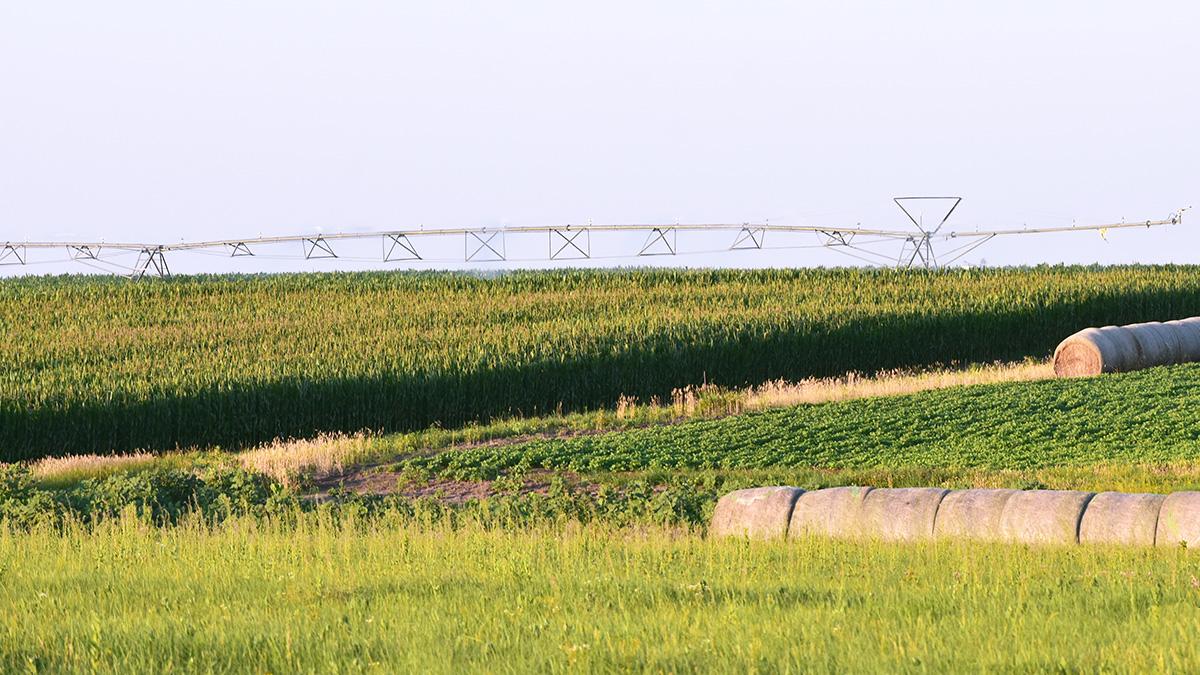Glennis McClure.
Agricultural producers, professionals, and policymakers often look to long-run projections for the agricultural industry as they make business and policy decisions. They can look to three different baseline projections that are produced by the United States Department of Agriculture, the Food & Agricultural Policy Research Institute (FAPRI), and the Congressional Budget Office (CBO). These baselines provide a 10-year outlook for the agricultural industry from prices and inventories for crops and livestock to international markets and income expenditures. While this information provides insight as to what direction agriculture may move, it can be hard to see the impact at the state and farm level.
The Rural and Farm Finance Policy Analysis Center (RaFF) works in conjunction with FAPRI to produce state-level income projections. The Center for Agricultural Profitability at the University of Nebraska-Lincoln collaborates with RaFF under the leadership of Dr. Bradley D. Lubben and Tatum R. Brunkow to produce state-level analysis for Nebraska. Figure 1 comes from the Spring 2023 Nebraska Farm Income Outlook (Maltsbarger, et al. 2023) and provides information as to the drivers of Nebraska’s net farm income changes between 2021 and 2023.
Figure 1. Spring 2023 Nebraska Net Farm Income Outlook

While the state-level projection provides a closer outlook for Nebraska producers, there can still be a disconnect between statewide numbers and farm-level results. Agriculture looks vastly different across the state and encompassing the diversity of Nebraska’s agriculture can be challenging. A series of case farms across the state will provide better insight into farm-level income, as well as policy analysis and impacts. Eight counties that lie in each of Nebraska’s eight agricultural statistics districts provide a geographical basis for case farms. Data from the 2017 Agricultural Census, (NASS 2019), provides information to model a full-time farming operation for the selected counties. A panel of producers in each of the eight counties will help to synthesize the Census data with local knowledge to develop a case farm with the appropriate crop mixes, acres, and livestock if applicable that are representative of the area. Figure 2 demonstrates the location of the eight case farms across Nebraska.
Figure 2. Gage County Case Farm

The Gage County case farm is the first of the case farms to be developed with local producer input. The Gage County case farm highlighted in Figure 2 represents a typical operation in Gage County with a mix of irrigated and non-irrigated corn and soybeans and a 50-head cow-calf enterprise.
The development of all eight case farms will provide a basis for ongoing farm-level income and policy analysis. This will allow for the analysis of farms across the state that represent Nebraska’s diverse agricultural industry to see how changes in economic outlook, changes in the farm safety net, or changes in production and management decisions may impact specific enterprises or whole operations. Ultimately, the case farms can provide researchers, producers, professionals, and policymakers the opportunity to extend national or state-level baseline projections all the way to the farm to identify impacts and management decisions that can affect and improve farm viability.
References:
Maltsbarger, B., Lubben, B., Brunkow, T., Dennis, E,. McClure, G., Parsons, J., Thompson, E., Van Tassell, L. & C. Walters. March 2023. Spring 2023 Nebraska Farm Income Outlook. RaFF Report #01-2023. Available at: https://ruralandfarmfinance.com/publications/#state-farm-income-estimates
U.S. Department of Agriculture National Agricultural Statistics Service. 2019. 2017 Census of Agriculture: Nebraska State and County Data, Volume 1, Geographic Area Series, Part 27. Retrieved from https://www.nass.usda.gov/Publications/AgCensus/2017/Full_Report/Volume_1,_Chapter_1_State_Level/Nebraska/nev1.pdf
For more information:
Congressional Budget Office. February 2023. CBO’s February 2023 Baseline for Farm Programs. https://www.cbo.gov/system/files?file=2023-02/51317-2023-02-usda.pdf
Food & Agricultural Policy Research Institute (FAPRI). March 2023. U.S. Agricultural Market Outlook https://fapri.missouri.edu/wp-content/uploads/2023/03/2023-Baseline-Outlook.pdf
Rural and Farm Finance Policy Analysis Center (RaFF). https://ruralandfarmfinance.com/
United States Department of Agriculture. February 2023. USDA Agricultural Projections to 2032 https://www.usda.gov/sites/default/files/documents/USDA-Agricultural-Projections-to-2032.pdf
Tatum R. Brunkow
Graduate Research Assistant
Department of Agricultural Economics, University of Nebraska-Lincoln
Bradley D. Lubben
Extension Policy Specialist
Department of Agricultural Economics, University of Nebraska-Lincoln
Glennis McClure
Extension Educator, Farm and Ranch Management Analyst
Department of Agricultural Economics, University of Nebraska-Lincoln
